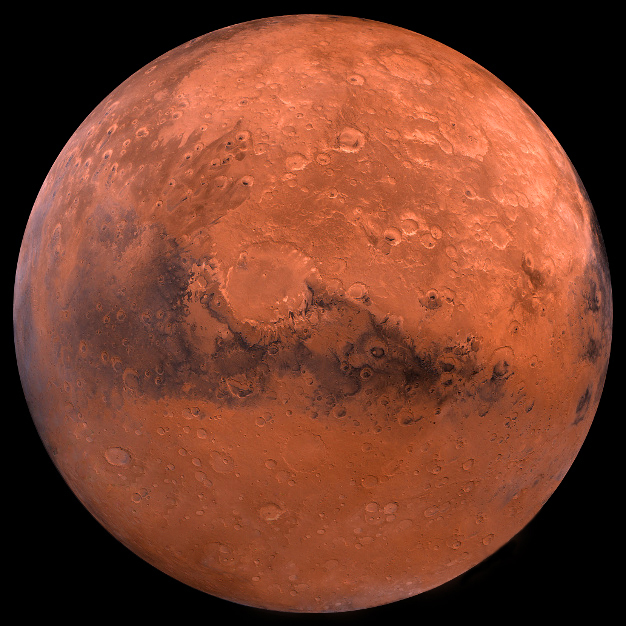
An international team of scientists has calculated that a crewed mission to Mars should only last a maximum of four years if the astronauts’ health isn’t to be endangered by prolonged exposure to cosmic radiation.
Planning a crewed mission to Mars would be one of the most daunting challenges of any exploration attempt ever made by humanity. Every aspect of such a multi-year adventure would have complex impacts on every other factor, producing a constant tug of war as scientists and engineers seek compromises to fulfill mission requirements.
As well as things like engine type, crew numbers, diet, and a thousand other things, planning also needs to take into account the ever-present hazard of radiation. Once outside of the protective envelope of the Earth’s atmosphere and its magnetic field, the astronauts would be at the mercy of cosmic rays from the Sun and the larger galaxy, so the question is, how to minimize such a threat?
According to the recent study that includes researchers from UCLA, MIT, the Skolkovo Institute of Science and Technology, and GFZ Potsdam, the key to protecting Red-Planet-bound astronauts is a matter of timing and shielding material.
The important point is that cosmic radiation isn’t constant. It varies according to the activity of the Sun, which may seem changeless, but is, in fact, a variable star with a major period of 11 years during which it waxes and wanes in activity.
There are two sources of cosmic rays. One is the Sun, which blasts out Solar Energetic Particles (SEP). These tend to be lighter and of lower energy than Galactic Cosmic Rays (GCR), which are generated by supernovae, black holes, quasars, and similar high-energy events. These GCR rays are often made up of very heavy particles flying at speeds and energies that can only be barely approached in the most powerful of particle accelerators on Earth and can cause considerable damage to living tissue over time.
The good news is that the Sun can act as a temporary shield against GCRs. When the Sun is most active, the solar winds become very strong and can ward off GCRs, which means that astronauts would be mostly exposed to less energetic SEPs, with GCRs being more of a reduced background radiation.
According to the study’s calculations, since GCR activity is at it lowest in the six to 12 months after maximum solar activity, a Mars mission of less than two years duration would be practical. However, a mission that lasted longer than four years would expose the crew to dangerous levels of radiation before returning to Earth, which puts an upper limit on mission time.
One reason for this limit is the nature of the radiation hazard. The worst danger would be from GCRs because they are so energetic that when the researchers used models of human organs and set them behind different shields, the shielding material itself becomes a problem.
There are many different ways to shield an astronaut, including heavy metal plates, tanks of water, or slabs of low-density polymers. The problem is that a shield heavy enough to provide direct protection not only causes weight issues for the spacecraft, the shield can also give off secondary radiation as the cosmic rays split the atoms in the shield.
“This study shows that while space radiation imposes strict limitations on how heavy the spacecraft can be and the time of launch, and it presents technological difficulties for human missions to Mars, such a mission is viable,” says Yuri Shprits, a UCLA research geophysicist.
